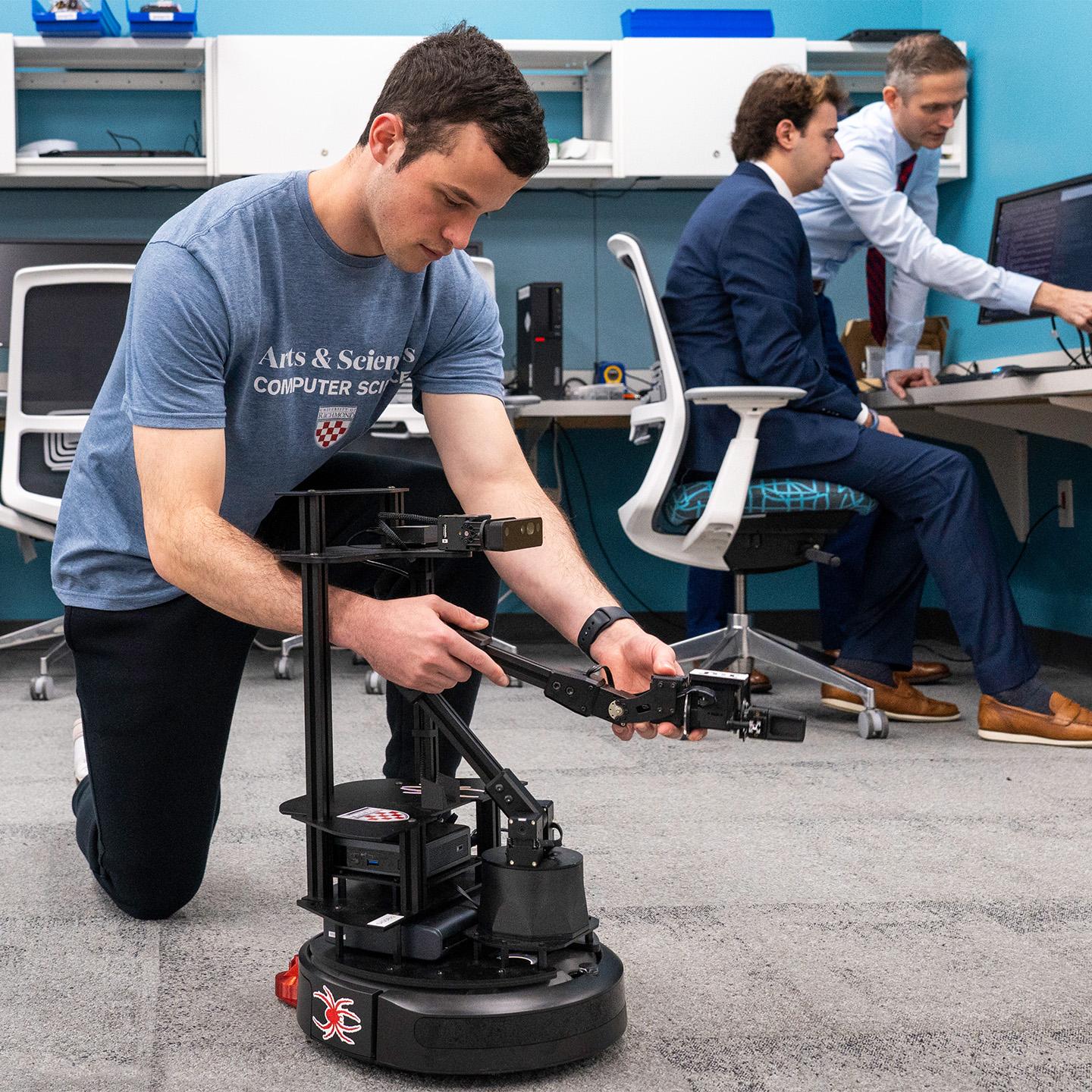Choreographed communication
Richmond's Robotics Research Improving Workplace Safety
Undergraduate students are teaching robots to dance in Dr. Patrick Martin’s robotics lab at the University of Richmond. It’s not ballet or hip-hop. Rather, it’s a choreographed dance partnership between machine and human. Martin and his team of student researchers are creating these dance collaborations to improve industry safety as more people work alongside robots in manufacturing, healthcare, or agriculture, to name a few.
“If you're going to have a robot in close proximity with a human, you're going to need to communicate with the robot, and the robot needs to communicate with you,” says Martin.
The assistant professor says it’s comparable to a team of cooks working together in a hot, compact kitchen. A non-verbal dance is required to prevent injuries. That’s why the robotics research at Richmond is focused on two areas: connection and communication. Martin wants to know how to get humans and robots working together safely. He also wants to know how to get them to understand one another so they can problem solve, adapt, and complete their tasks with or without audible signals.
Martin works with his undergrad researchers to advance the field of robotics, which includes the overlap with artificial intelligence, and to introduce them to the vast opportunities available in the fields of science, technology, engineering, and math (STEM). His biggest goal is to keep his students interested, dedicated, and confident in their findings. He says he does this by drawing from his own liberal arts education as an undergraduate.
He went on to earn a master’s degree in engineering with a goal to one day work in robotics. But while working in an Army research lab and tutoring on the side, lightning struck.
“It just clicked in my brain, ‘I really like teaching,’” Martin said. “That's what took me then to my Ph.D.”
Martin quickly transitioned from industry to academia. Some of his early research included developing a robotic puppetry system and later mapping human motions to mechanical systems.
While working as a professor at an R1 university, Martin met a dance professor who was exploring the interface of choreography and technology. They teamed up using dance majors trained in the Forsythe Method. It is a dance technique created by William Forsythe, a dancer and choreographer, who revolutionized ballet by merging complicated invisible geometry with traditional ballet movements. When paired with robotics, the result is a new form of improvisation and algorithmic interaction.
This collaboration created a whole new research path that Martin brought to the liberal arts environment at the University of Richmond.
Robots and Students Find Their Rhythm
In June 2024, he arranged a three-day dance training with Forsythe dancer and choreographer Noah Gelber to further prepare Richmond computer science students to dance with the robots. Some had experience dancing socially. Others hadn’t danced at all.
“I'm not really good at it at all, so it was physically and mentally challenging,” says Meklet Berihun, '27, a sophomore robotics researcher. “I think you learn more about your body and how it could translate into the robot moving its own arm and feet (wheels).”
“I never had danced before, so I was working my body in a lot of ways,” added Jordan Attys, '27, a sophomore researcher with Martin. “It was interesting trying to imitate how a robot would move.”
Martin says the dancing helps keep the research fun and reduces student stress, further assisting in the communication of complex ideas.
“I still trace a lot of what I learned in my successes back to what I did in a liberal arts school,” reflected Martin. “I took a lot of different courses. I think it rewired my brain, in a sense, to not burrow deep on one thing and never look at anything else.”

If you’re going to have a robot in close proximity with a human, you’re going to need to communicate with the robot, and the robot needs to communicate with you.
